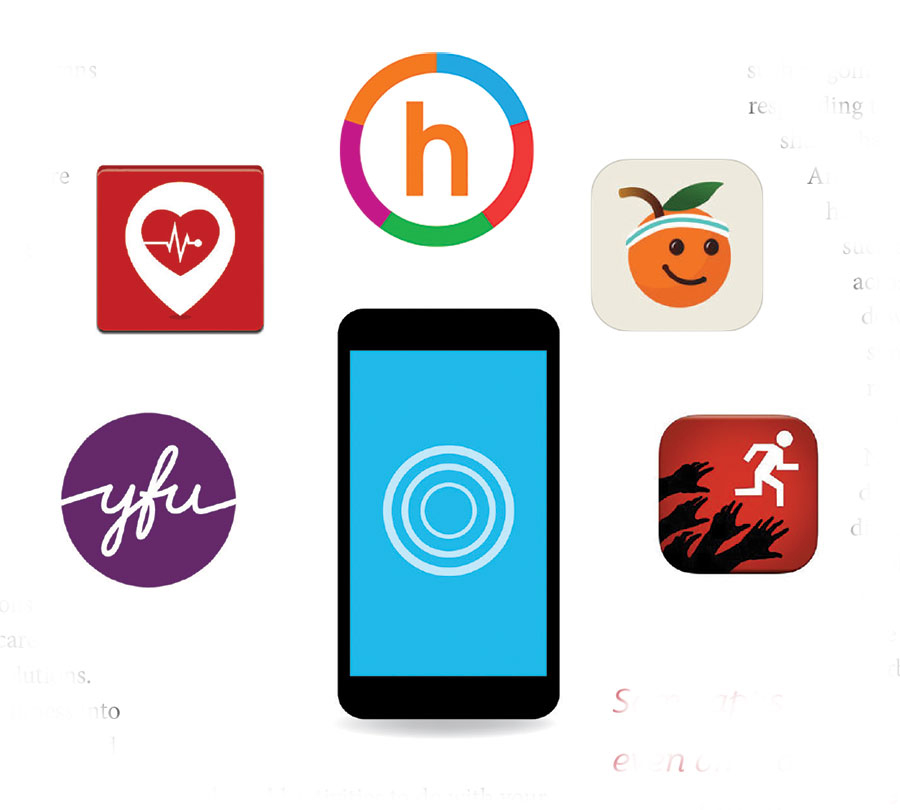
While nearly 40 percent of Americans have never heard of the term “telemedicine,” it’s already changing how we stay healthy. In 2015, more than 15 million Americans received some form of medical care remotely, according to the Wall Street Journal. That number is only expected to grow — by nearly one-third this year alone, says trade group American Telemedicine Association.
On the forefront: parents who want to harness their children’s interest in technology for some much-needed aid when it comes to mental and physical health. Using electronic communications like apps and email to provide health care offers some surprisingly kid-friendly solutions.
Take technology that turns physical fitness into a fun game, allowing families to get outdoors and engage in a little healthy competition, or apps that encourage children to develop positive thinking and coping skills. There are even online exchange programs that connect teens from opposite sides of the world, allowing them to see up close and personal what life is like for others and so foster a stronger sense of empathy.
So, while screen time may seem like the antithesis of staying healthy, the following three examples prove that plugging in can have its perks.
Get happy
Although happiness apps like Happify aren’t a substitute for therapy provided by a professional, they encourage families to focus on the positives and improve any negatives. This, says Happify head of content strategy Tiffany Sun, increases empathy between family members. “Happify cultivates valuable skills like optimism and gratitude in kids from a young age, which will serve them well as adults,” she says.
The app’s exercises can be adjusted based on a child’s age; Sun recommends “Raise Happy, Resilient Kids” and “Raise Happy, Resilient Teens.” Each includes self-reflection tasks, real-world activities to do with your kids, as well as games, quizzes and polls.
An example from the “Kids” track: Parents and children work together to come up with five nice things to do for strangers in a single day day. The activity was inspired by research from Sonja Lyubomirsky, Ph.D. and professor of psychology at the University of California—Riverside, which showed that performing five acts of kindness in a day boosts happiness with lasting positive effects.
Performing five acts of kindness in a day boosts happiness with lasting positive effects.
A popular Happify activity from the “Teens” program has parents tell their kids about their own childhoods by showing them family photos or taking them to memorable locations. The exercise was developed based on research from Emory University that found kids who know about their family history tend to have higher levels of self-esteem and resilience than their peers who don’t possess such knowledge.
Both “Raise Happy, Resilient Kids” and “Raise Happy, Resilient Teens” offer gratitude exercises such as going around the table at dinner and responding to written prompts from the app to share what each family member is grateful for. Another activity — Negative Knockout — has a user create a cannonball with a word such as “worry” or “anxiety” written across it. Then, the user holds her finger down on the cannonball, aims it with a slingshot and lifts it up when ready to release the negative emotion.
One Happify user, Barbara*, says Negative Knockout helped she and her daughter “find a common language for discussing feelings.”
“She will sometimes type in a subject she is having trouble with in school. She cheers when she knocks it out,” Barbara says of her daughter. “It helps her feel less stressed and more in control of her mood.”
Keeping healthy
While, of course, there’s no replacement for licensed medical advice, physical fitness and healthy eating apps encourage day-to-day changes that can make a difference. Take, for example, Zombies, Run!, an app that turns your regular run into an adventure. Before setting out on a jog, plug in your headphones, turn on the app and you’ll hear the sound of zombies in hot pursuit.
“The feedback from users has been that it makes running tolerable and makes fitness more fun,” says Julie Kientz, associate professor in the Human Centered Design and Engineering Department at the University of Washington (UW), whose research focuses on health informatics.
“Kids realize they never knew how little sleep their parents get. It makes them think, ‘Maybe I should be kinder to my mom or dad because they didn’t get much sleep.’”
Another more familiar example is the ubiquitous Fitbit electronic wristband. Families may use their Fitbits for some healthy competition over who’s more physically active on any given day while others use it to monitor sleep. The tool, says Kientz, can influence how family members empathize with one another.
“Kids realize they never knew how little sleep their parents get,” she says. “It makes them think, ‘Maybe I should be kinder to my mom or dad because they didn’t get much sleep.’ It raises awareness.”
For families making an effort to improve eating habits, Kientz recommends Fooducate. The app allows you to scan the barcode on a food product and then grades it on a scale of A through F based on healthiness. If the food earns a low grade, the app recommends a better-rated option, such as swapping a can of soda for some sparkling water.
Some apps even offer a literal lifeline for busy families. For example, the app PulsePoint alerts CPR-trained volunteers when someone in their vicinity needs help. PulsePoint interacts with emergency dispatch systems that scan for codes showing someone is in cardiac arrest.
When the Med 7 code, which indicates cardiac arrest, comes through, operators send out an alert to PulsePoint volunteers, who are may be able to reach the emergency more quickly than emergency responders. They can then perform CPR until an ambulance arrives.
Beam in a buddy
Virtual cultural exchange programs: Consider them the penpal programs of the 21st-century. A variety of programs facilitate these online meetings, which provide an online platform for students to expand their worldview by discussing current events and and culture with peers all over the globe.
Earlier this year, Youth for Understanding (YFU) USA, an international education organization with partners in more than 60 countries, began connecting U.S. teenagers with teens in the Middle East and North Africa. Similar programs are being used by high schools and colleges across the country, including American University.
There’s something about the visual nature of seeing a person’s lived reality that’s a completely new experience.
“These programs demonstrate how technology is making these sorts of relationships possible in a more immediate way,” says Katie Headrick Taylor, assistant professor of learning sciences and human development at the UW, who specializes in social media use by children and underserved communities.
Instead of waiting several weeks to receive a piece of mail from a penpal, the relationship-building happens more quickly and feels more personal, she says of these programs.
“There’s something about the visual nature of seeing a person’s lived reality that’s a completely new experience and a different way of engaging with somebody else’s world,” Taylor says, adding that it’s the next best thing to being physically present with the other person. Taylor points out that the virtual aspect makes the connection more intimate, which enhances the learning experience and builds a stronger relationship.
“[These programs] add additional layers of experience and the experience to observe,” says Taylor. “These new mediations of experience are so much more nuanced and rich.”











